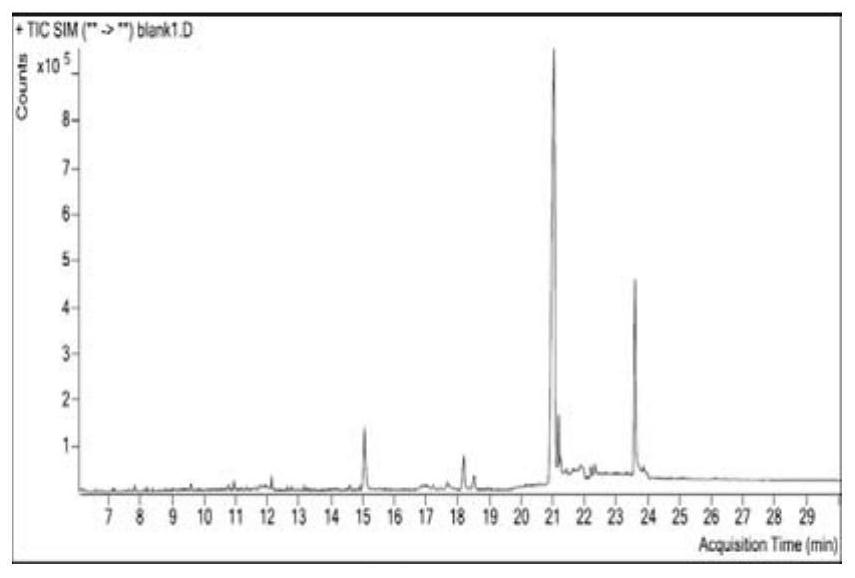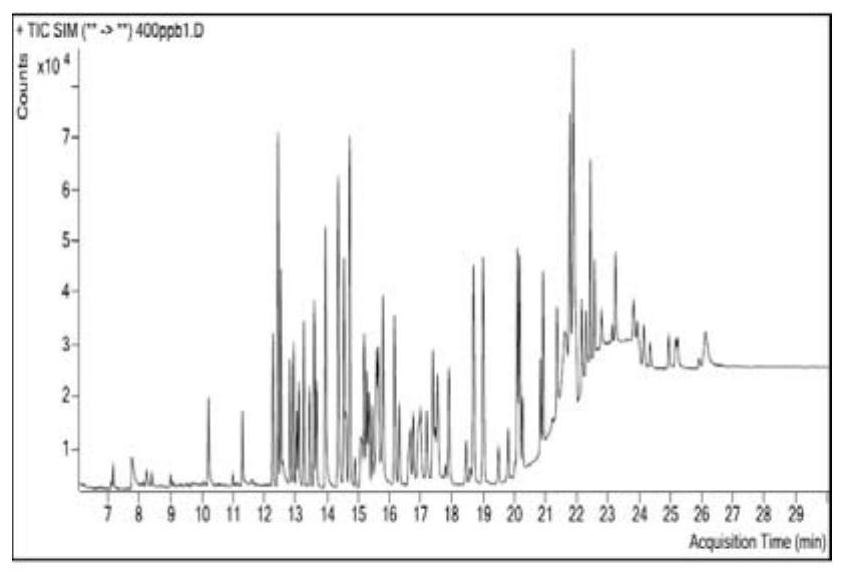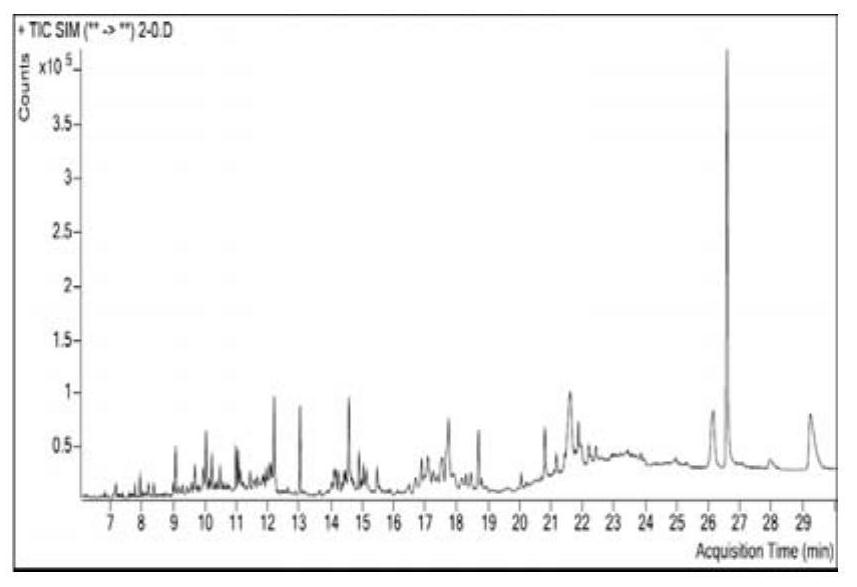Method for detecting 22 organochlorine pesticide residues in total glucosides of radix paeoniae alba by using gas chromatography-mass spectrometry technology
A gas chromatography and pesticide residue technology, applied in the field of detection of 22 kinds of organochlorine pesticide residues in total glucosides of paeony, can solve problems such as interference with pesticide residue detection, and achieve the effects of high accuracy, good linearity and accurate quantification.
- Summary
- Abstract
- Description
- Claims
- Application Information
AI Technical Summary
Problems solved by technology
Method used
Image
Examples
Embodiment 1
[0093] Example 1: Examination of specificity
[0094] Preparation of 22 organochlorine pesticide residue stock solutions:
[0095] Weigh 10 mg of 22 reference substances, accurately weigh them, and place them in a 10 mL volumetric flask, dissolve them with acetone and make up to the mark, and prepare a 1 mg / mL stock solution; the pesticide residue standard stock solution is stored at -18°C;
[0096] Preparation of 1 μg / mL mixed reference solution: take 100 μL of the stock solution, dilute to 10 mL with acetone to obtain a 10 μg / mL mixed reference solution, take 1 mL and dilute it to 10 mL with acetone to obtain a 1 μg / mL mixed reference solution. See Schedule 1;
[0097] Preparation of 400ng / mL mixed reference solution: take 400 μL of the above 1 μg / mL mixed reference solution, add acetone to dissolve and dilute to 1 mL to obtain a 400ng / mL mixed reference solution;
[0098] Preparation of the test solution of total glucosides of paeony glucosides: direct sampling of total g...
Embodiment 2
[0108] Example 2: Investigation on the pretreatment of different fillers
[0109] Prepare ① 900 mg of anhydrous magnesium sulfate and 300 mg of silica gel into a 15 mL centrifuge tube with a stopper, ② 900 mg of anhydrous magnesium sulfate into another 10 mL centrifuge tube with a stopper, ③ a commercially available pesticide residue purification tube; add 6 mL of toluene, 1 ppm Residual mixed reference substance 100μL, vortexed for 1min, centrifuged at 4000r / min for 5min, took the supernatant, placed it on a nitrogen blower at 40°C water bath and nitrogen blown to dryness, added 1mL of toluene, vortexed and mixed evenly, and filtered with a 0.22μm microporous membrane. Filter and get the filtrate.
[0110] Chromatographic conditions: Column: HP-5MS (30m×0.25mm×0.25μm); programmed temperature: 60°C for 2min, 16°C / min to 150°C for 0min, 10°C / min to 200°C for 0min , 3 °C / min to 220 °C for 0 min, 25 °C / min to 290 °C for 8 min; injection port temperature: 250 °C; injection volume...
Embodiment 3
[0114] Example 3: Inlet temperature investigation
[0115] Preparation of 100ng / mL mixed reference substance solution: take 100 μL of the above 1 μg / mL mixed reference substance solution, add acetone to dissolve and dilute to 1mL to obtain 100ng / mL mixed reference substance solution;
[0116] Preparation of the standard solution of total glucosides of paeony glucoside: direct sampling of total glucosides of paeony, weigh 2 g of the test product, weigh it, put it in a 15 mL centrifuge tube with stopper, add 10 mL of toluene, and add 1 μg / mL mixed reference substance Solution 200μL, ultrasonic for 20min, centrifugation at 4000r / min for 5min, take the supernatant to a 15mL centrifuge tube, add 900mg anhydrous magnesium sulfate, 300mg silica gel, vortex for 1min, centrifuge at 4000r / min for 5min, take the supernatant, put it in 40 Blow nitrogen in a water bath until dry, add 2 mL of toluene to make the volume, pass through a 0.45 μm filter membrane, and get the filtrate;
[0117]...
PUM
| Property | Measurement | Unit |
|---|---|---|
| recovery rate | aaaaa | aaaaa |
Abstract
Description
Claims
Application Information
 Login to View More
Login to View More - R&D
- Intellectual Property
- Life Sciences
- Materials
- Tech Scout
- Unparalleled Data Quality
- Higher Quality Content
- 60% Fewer Hallucinations
Browse by: Latest US Patents, China's latest patents, Technical Efficacy Thesaurus, Application Domain, Technology Topic, Popular Technical Reports.
© 2025 PatSnap. All rights reserved.Legal|Privacy policy|Modern Slavery Act Transparency Statement|Sitemap|About US| Contact US: help@patsnap.com



